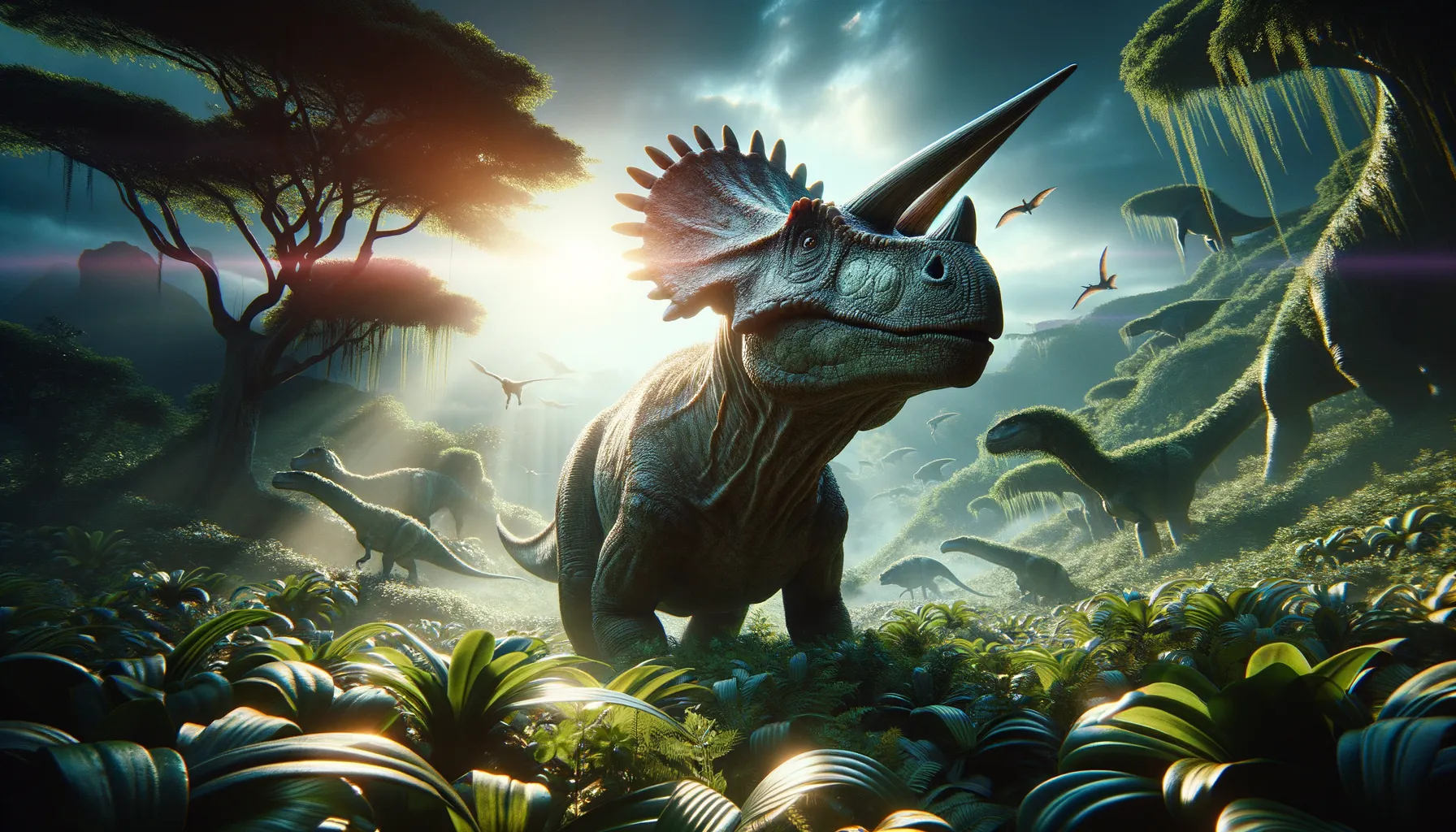
Spinops
Horned giant of the late Cretaceous.
Period
Cretaceous
Length
About 4.5 to 5 meters long.
Height
Roughly 1.5 meters at the hips.
Weight
Approximately 2,000 to 2,500 kilograms.
Spinops lived during the late Cretaceous period and belonged to the ceratopsid family, known for their distinctive horns and frills. Its fossilized remains were first unearthed in the early 1900s but were not formally described until several decades later. Spinops had unique horn arrangements on its face and a bony frill at the back of its head. Like other ceratopsids, it likely inhabited areas rich in plant life, providing it with ample food resources.
Diet
Spinops was herbivorous, feeding primarily on vegetation such as ferns, cycads, and flowering plants. Its beak-like mouth helped it grasp and shred tough plant materials, which it likely processed with its cheek teeth.
Hunting
As a herbivore, Spinops did not hunt but instead foraged for plants. This involved moving through its habitat to find various types of vegetation suited to its diet.
Environmental challenges
Spinops faced several environmental challenges, including climate variations of the late Cretaceous. Seasonal changes could have affected food availability, requiring adaptation in feeding habits. Predators in its environment, like large theropods, presented constant threats, necessitating defensive social behaviors and the use of physical features like horns.
Speed
Relatively slow, likely a plodding pace.
Lifespan
Estimated to live several decades.
First discovery
Discovered in Alberta, Canada, in the early 20th century.
Fun Facts
- Spinops was a plant-eating dinosaur that lived about 76 million years ago during the Late Cretaceous period.
- The name 'Spinops' means 'spined face,' referring to the distinctive spikes and horns on its head.
- Spinops was a member of the ceratopsian family, which also includes the famous Triceratops.
- The fossils of Spinops were discovered in Alberta, Canada, although they were initially overlooked for nearly a century.
- Spinops was relatively small compared to other ceratopsians, being about 20 feet long.
- Spinops may have used its facial spikes and frill for defense against predators or for mating displays.
- The discovery of Spinops gave scientists new insights into the diversity and evolution of horned dinosaurs.
Growth and Development
Spinops hatched from eggs and grew steadily to its full size over several years. This growth involved the development of its characteristic horns and frill, which likely played a role in social displays and defense. It achieved maturity at a size where it could better defend itself against predators and compete for resources.
Habitat
Spinops inhabited lush, floodplain environments with abundant plant life. These regions provided reliable food sources and access to water, vital for survival. The terrain would have included open areas and forested sections, contributing to a dynamic ecosystem with diverse flora and fauna.
Interaction with other species
Spinops likely coexisted with various other dinosaur species and smaller vertebrates. Interaction with predators was common, requiring vigilance and defensive tactics. Cooperation within its species, potentially in herds, helped provide safety and support against threats.
Natural lifespan
Spinops likely lived for around 20 to 30 years.
Reproduction
Spinops reproduced by laying eggs in nests, potentially with some level of parental care to protect the young. During mating season, individuals may have engaged in displays using their horns and frills to attract mates.
Social behaviour
Spinops may have lived and traveled in groups, a behavior common among ceratopsids for enhanced protection. These social structures involved complex interactions, possibly including communication through vocalizations or body language.
Fossil locations
Fossils of Spinops have been found primarily in Alberta, Canada, offering insights into its physical characteristics and environment. The discoveries have enhanced understanding of the diversity among ceratopsid dinosaurs.
